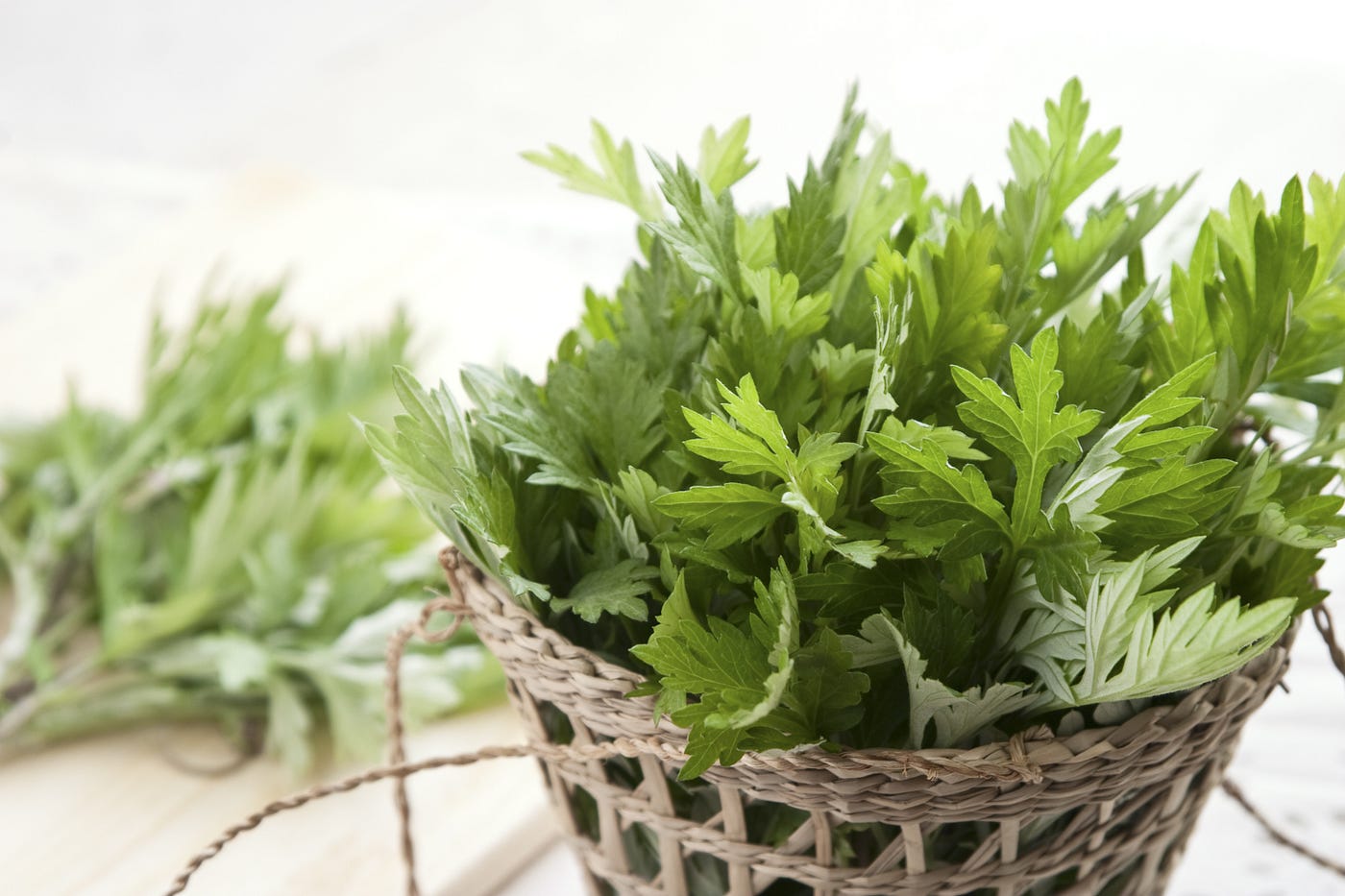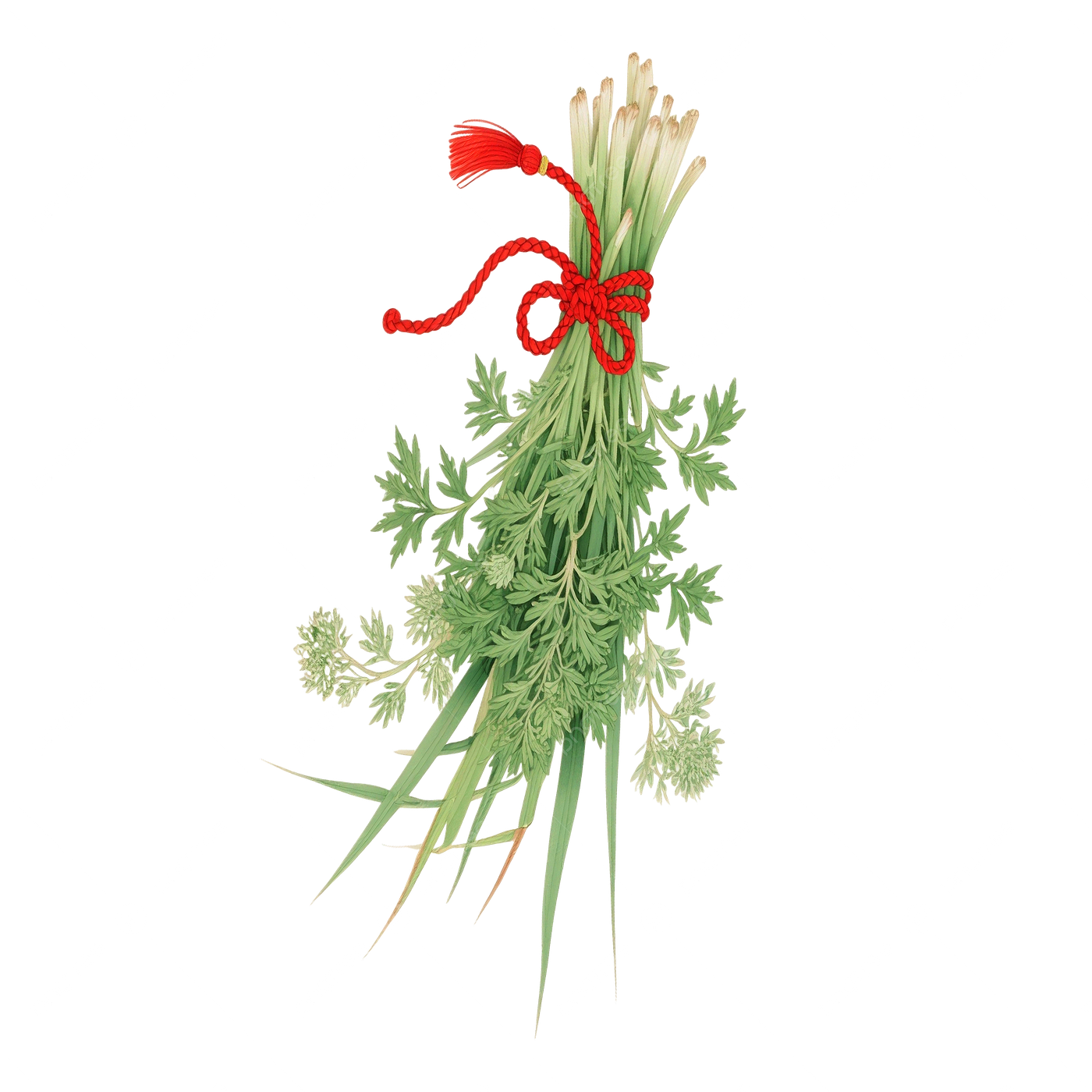
Herbal Shields: The Ancient Role of Wormwood in a Culture of Protection
Share

In traditional Chinese culture, the idea of warding off evil (demon-repelling) is a concept woven into stories, festivals, and daily rituals. One of the most ancient and trusted tools for this purpose is wormwood/mugwort. Over centuries, people have used wormwood in medicine, ritual, and everyday life — not just for its fragrance, but for its symbolic power to protect, purify, and restore balance.
The Ancient Roots of Wormwood and Demon-Repelling
Wormwood appears in classical Chinese texts going back thousands of years, associated both with healing and ritual. As traditions developed, the use of wormwood became linked with traditions of expelling negativity and misfortune.

In Chinese medicine, wormwood is classified as a warm, restorative herb. It is widely used in moxibustion, a practice where dried wormwood is burned near certain points on the body to stimulate circulation, dispel cold, and restore harmony to the body. Modern research confirms that wormwood contains volatile oils and compounds with antimicrobial and anti-inflammatory properties, lending real physical support to its traditional role as a protector.
Wormwood in Festivals and Cultural Practice
One of the most vivid traditions tied to wormwood happens during the Dragon Boat Festival. Falling on the fifth day of the fifth lunar month, this festival includes ritual practices intended to ward off illness, insects, and negative energies — all believed to intensify in the early summer heat. In many regions, households hang sprigs of wormwood, mugwort and calamus (an aromatic aquatic plant) at their doorways to discourage pests and evil influences.
Legends say that the strong scent of wormwood and mugwort repels insects and “poisonous air,” while the shape or potency of calamus echoes warding power. Hanging these herbs on windows and doors became a symbolic guard against misfortune.

Additionally, children were sometimes given fragrant sachets of herbs or small ornaments woven from wormwood during the festival to carry protection with them. In some areas, people also took medicinal baths or soaked linens in wormwood-infused water, believing these practices would cleanse the body and spirit and prevent disease.
Bringing Wormwood into Ritual & Daily Life
If you’re drawn to bring this tradition into your own surroundings, one direct way is by burning incense made with wormwood. The gentle herbal smoke can help purify space, reduce lingering negative energy, and anchor your intention of protection. Such incense echoes centuries of ritual use — melding the practical benefits of wormwood with its symbolic power.
At INCENZO, we make Chinese traditional incense sticks with 100% natural ingredients. Our Rewild — the wormwood incense, is an option for you to integrate this ancient herb into your daily rituals practice.

Alongside incense sticks, you might place dried sprigs near entrances, carry a small sachet of wormwood / mugwort leaves, or occasionally incorporate a wormwood ritual bath in your seasonal routines.
In honoring the tradition of demon-repelling through wormwood and mugwort, we connect with a long lineage of care, protection, and sacred awareness. These practices remind us that a simple herb, burned or hung, embodies a gesture of safeguarding — linking past wisdom to our present need, and keep us safe from visible or invisible evilness in life.
